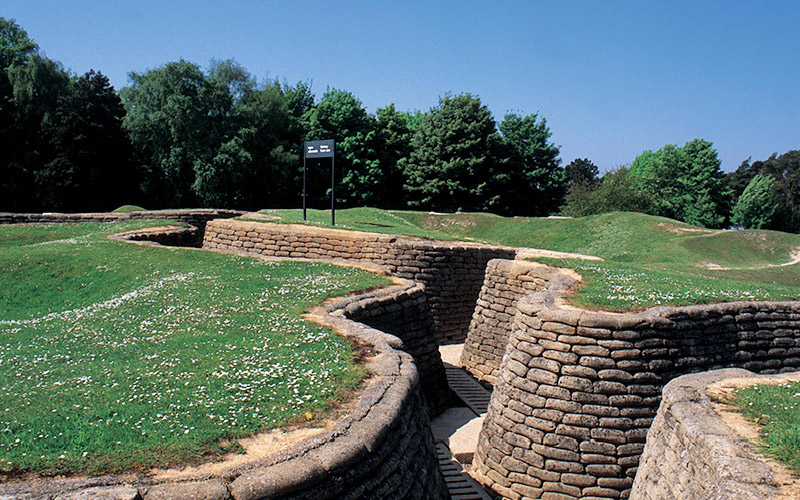Top Ten Battlefield Tours and Holidays
History is littered with great wars fought by brave soldiers, and while the battles may have finished, the legacy of these great events is still echoed on the battlefields where they took place.
Battlefield tours make for an amazing holiday, being both educational and moving, they are sure to enthuse any history buff!
1. Ypres, Belgium
This Belgian town was the scene of four great battles during the First World War. The first Battle of Ypres saw the British, French and German armies engage in trench warfare.
The third battle at Ypres is better known as the Battle of Passchendaele, and led to the loss of half a million lives, while the fourth battle took place at the end of the war in 1918. There are many tours of the battlefields available to visitors.
2. The Crimea, Ukraine
In September 1854, the French and British landed their armies on the Crimean peninsula.
The Allies marched southward, and laid siege to Sevastopol for a full year. On the way to Sevastopol, the Allies fought their first major battle at the River Alma. Peace was eventually reached in February 1856. It is possible to visit the scene of the charge of the Light Brigade, and also the Battle of Balaclava.
3. The Rhine and the Battle of the Bulge, Belgium
Toward the end of World War Two, about 250,000 German troops swept down from the Ardennes to attack the Allies in December 1944. Over the following eleven days, more than one million men became involved in an intensely bloody battle.
The fierce fighting saw the German force sustain casualties of 100,000 men, while the Allies lost only 19,000. It was Germany’s last big push in Europe, and their army never really recovered from the huge losses they suffered during the battle.
4. Waterloo, Belgium
The Battle of Waterloo took place on 18th June 1815, and served as the final military defeat of Napoleon. This ended twenty three years of recurrent warfare between France and the other major European powers of the age.
The battle was fought between Napoleon’s army of 72,000 men, and a combined allied force of 68,000 troops under the control of the Duke of Wellington. The allied army consisted of British, Dutch, Belgian and German units, as well as around 45,000 Prussian soldiers.
5. Hastings, England
The Battle of Hastings took place on 14th October 1066, and saw the English army of King Harold clash with the forces of William, Duke of Normandy. Fifteen years earlier, Edward the Confessor had named the Duke of Normandy heir to the English throne. In January 1066, Harold was made King of England instead, and William decided to take the crown by force.
The town of Battle, located near Hastings, was named after the conflict.
6. The Normandy beaches, Normandy, France
6th June 1944, otherwise known as D-Day, was the turning point of the Second World War. On that day, a combined Allied force landed in Normandy, in the greatest sea invasion ever seen. 180,000 men, 3,000 guns, 1,500 tanks and 15,000 other vehicles flooded the beaches of northern France, as the Allies laid siege to the defences of the German army.
Although the battle was both intense and bloody, only 2,500 of the invading Allied army were killed on D-Day itself.
7. American Civil War Battlefields, United States
Between 1861 and 1865, the greatest war in American history took place, during which twenty percent of the three million combatants lost their lives. It remains the only civil war fought on American soil, and there are hundreds of monuments and tours throughout the country in commemoration of the conflict.
Reenactments are hosted at many of the key battlefields, while guided tours are also provided on a regular basis.
8. Agincourt, France
During August 1415, Henry V and an army of around 11,000 men invaded Normandy. On their way back to England, Henry’s exhausted army was ambushed at Agincourt by a French force around 30,000 strong.
The battle was a disaster for the French, as Henry made some brilliant tactical moves, while the French made a series of tactical blunders.
9. The Alamo, Texas
On 23rd February 1836, the thirteen-day siege of the Alamo began in San Antonio, Texas. A huge Mexican army marched on the Alamo Mission, which was being defended by Texans and European adventurers.
Ninety minutes after it began, the battle was all over. All but two of the Texans died, while the Mexicans lost 1,544 men. The Alamo is now a US national monument and museum.
10. England and Scotland
Fought between England and Scotland, the Border War was one of the longest-running border conflicts the world has ever known, beginning in 1296 and ending in 1568. Despite the name, many of the battles were fought throughout Britain, in places far away from the actual border.
The most infamous border battles include Carham on the River Tweed, fought in 1018; the Battle of Alnwick in 1093, where Malcolm III fell; Halidon Hill in 1333, fought near Berwick-on-Tweed; the Battle of Hexham in 1464; and Flodden in 1513.
Latest posts by Sally - Silversurfer's Editor (see all)
- Should smacking a child be banned in England and Northern Ireland? - April 17, 2024
- Enjoy the best of the UK on a Shearings coach holiday - April 17, 2024
- Blueberry & Lemon Curd Bread and Butter Pudding - April 16, 2024
- Navigating the World with What3Words: A Lifeline for Older Generations - April 15, 2024
- Parsley Box – Bringing you time for the things you love! - April 12, 2024





















